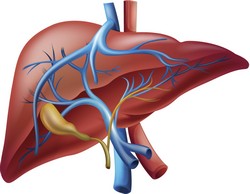Artificial liver for toxicity testing
According to EU policy, toxicity testing of chemicals and cosmetics should enter a new era that reduces the use of animals. However, the need for prolonged monitoring of the toxic effects of a specific substance and the poor concordance between animal and human data necessitate novel testing approaches. To this end, scientists on the EU-funded HEMIBIO(opens in new window) (Hepatic microfluidic bioreactor) project proposed to generate a bioartificial device mimicking the complex structure and function of the human liver. This bioreactor supports the interaction of hepatocytes with the non-parenchymal fraction of the liver such as hepatic stellate cells (HSCs) and liver sinusoidal endothelial cells (LSECs). It functions in a high-throughput format and facilitated toxicity testing of cosmetics and chemicals in vitro for over one month. As a first step, scientists characterised human primary HSCs and LSECs at the functional and transcriptional levels. This helped them understand the differentiation process of each cell type and allowed them to obtain immortalised hepatocytes as optimal cell populations. The viability of these cells as well as the oxygen levels, pH and glucose levels in the bioreactor were monitored continuously through specific sensors. With respect to the bioreactor itself, the consortium followed two approaches, namely an antibody-based microfluidic system and a flow-over bioreactor. The former utilises streptavidin-based surface chemistry to provide avidin-conjugated antibodies that could drive the differentiation of cells in microfluidic devices. The flow-over stainless steel bioreactor protects hepatocytes from shear forces by maintaining stable oxygen and nutrient gradients. Overall, the innovative HEMIBIO tools could be exploited in the pharmaceutical or cosmetics industries for toxicity testing. Notably, they could also serve as a model for liver fibrosis by identifying drugs that induce this phenomenon.







